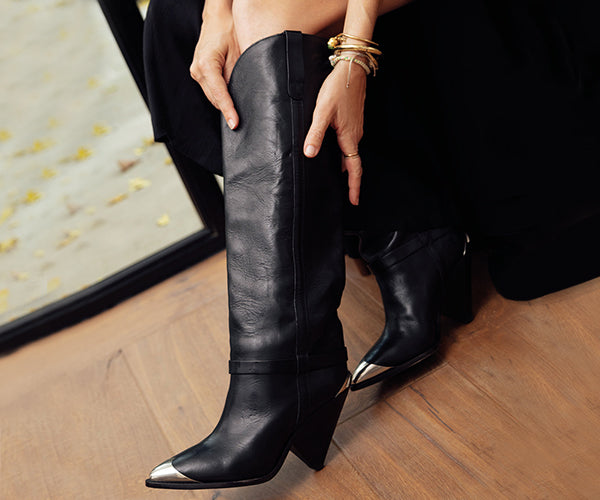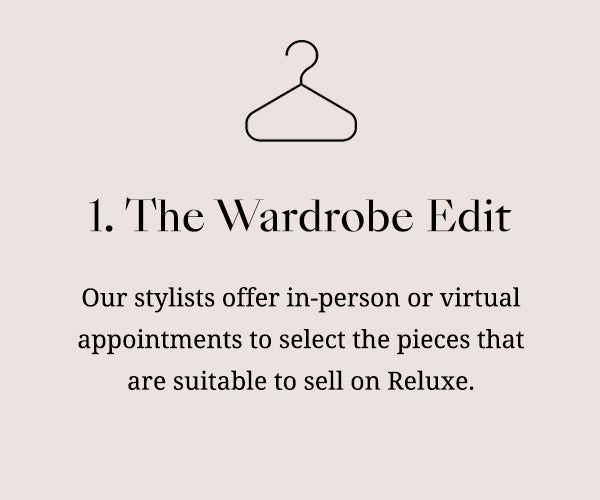Anaak
Timeless and feminine, modern bohème created in the most ethical and sustainable way, empowering women and artisans around the world.


Designer Marissa Maximo founded Anaak after what she thinks was her version of a mid-life crisis. She spent nearly two decades working in corporate fashion, before she realised that she wanted to contribute something to the world around her. Working with incredible artisans in India, the brand has quickly become renowned for its handcrafted textiles and chic, yet effortless silhouettes. In celebration of Relove x Anaak, Maximo explains the art of craftmanship, and how fashion wasn’t always her first choice.
What was the idea behind Anaak?
Anaak, pronounced [a·nak], means “child” in the Filipino dialect Tagalog. It is the name I grew up with, and to this day, the name my mother still calls me. It is also the name that all Filipinx children are called by their parents.
Anaak is both a personal and universal story. For almost two decades I worked in the fashion industry with a large corporate retailer, starting my career from the ground up at a time before there was the internet and fast fashion. It was a very special time in my career. I was hands on, painting and designing, traveling across the world taking inspiration from the sounds, taste, smells, and textures I found whilst working directly with manufacturers in remote places, such as Turkey, Indonesia, Mainland China, Taiwan, and India.
I wanted to take a step back in time and get off the unsustainable, speeding train of fast fashion. I was 40-years-old when I started Anaak. It was on a small island cove in South India on a bare-bones retreat that I thought about "what am I doing and how am I contributing to the world." I suppose it was my "mid-life crisis," but also my chance to begin living the life I wanted.
“Our mission, as a brand, is to utilize and preserve traditional textile techniques while embracing sustainable fibers.”

Where does the inspiration come from?
Inspiration for Anaak's collections ultimately comes from the textiles, and artisans who make them. Our mission, as a brand, is to utilize and preserve traditional textile techniques while embracing sustainable fibers. Our fabrics are made in the same way they were centuries ago, from wood block-printing to hand-weaving, and it is my mission to keep these slow crafts alive.
Who is the Anaak woman?
The Anaak customer is one who appreciates art and handicraft. They want something unique and special, as well as wanting to contribute to making a positive impact on the lives of artisans around the world. They march to the beat of their own drum, whether she is a fellow wanderluster or have a strong sense of personal style and not beholden to trends.
Where are the pieces made?
After scouring the globe for so many years, I chose to centralize Anaak's production in India. It is a country that I know well and have grown to love after 20 years of traveling there. I have seen the country change over this time, but at the same time, I feel as though I am transported back in time when I see how simple village life is. Our fabrics are printed and woven in very small villages, at least 6-8 hours away from any modern town or city. India is also a place where I have genuinely built close lifetime relationships with artisans and manufacturing partners that go beyond work and/or a season. They will be with me no matter what, with or without Anaak.
“Sustainable means two things to me. Firstly, it means establishing consistent business with our artisan partners. Secondly, it means having the lowest impact on the environment as possible.”

How do you work with the artisans?
When I started Anaak, I would travel for months at a time for half the year, renting a flat and going to visit my sewers every day, as well as traveling to new areas in North and South India and West Bengal, to see the artisans. Since their work is a cottage craft, their looms are at home. Each weaver builds their own loom, it is often in the front of their home and is dug from the ground so they can stay cool while they work. For block printing, the whole village is dedicated to the craft, across generations, and almost everyone who lives in the village has worked in this craft.
What does sustainable fashion mean to you?
Sustainable means two things to me. Firstly, it means establishing consistent business with our artisan partners. Secondly, it means having the lowest impact on the environment as possible. We have recently transitioned all our cottons to be organic, GOTS certified, using azo-free dyes, which are biodegradable, and engineering our designs and patterns to create zero waste. In addition, the traditional techniques we use, of block printing and hand-weaving, also produce less waste, and use less water and energy.
What drew you to fashion?
To be honest, fashion was not my first choice. Though, I did do a 7th Grade presentation on "what I wanted to be when I grew up," and it was Fashion Design. I grew up in a small, poor suburb just outside of Baltimore City and every Sunday after church, I went to the local library with my grandparents. It was my portal out of this small town. I would check out "how-to" drawing books and Seventeen magazine. I loved drawing the photoshoots of beautiful models in far-away places. I loved the clothes, and both my mother and father loved fashion and had style. Being 1st generation Filipinos in a predominately Caucasian town, they stood out. They always had their own flare, and that always stuck with me. I always dreamt of being an artist, a painter. In a way, I am living that dream through Anaak working with artisans.
-
Vendor:The Archive x Anaak
Black Anneka Deep-V Jumpsuit (M)
Regular price £195.00Regular priceUnit price / per -
Vendor:The Archive x Anaak
Pearl Dot Grid Clara Tier Skirt (M)
Regular price From £225.00Regular priceUnit price / per
-
Vendor:The Archive x Anaak
Pearl Dot Grid Haveli Gather Blouse (M)
Regular price From £175.00Regular priceUnit price / per -
Vendor:The Archive x Anaak
Pale Peach Lily Elisabeth Ruffle Maxi Dress
Regular price £260.00Regular priceUnit price / per
-
Vendor:The Archive x Anaak
Black Anneka Deep-V Jumpsuit (M)
Regular price £195.00Regular priceUnit price / per -
Vendor:The Archive x Anaak
Pearl Dot Grid Clara Tier Skirt (M)
Regular price From £225.00Regular priceUnit price / per
-
Vendor:The Archive x Anaak
Pearl Dot Grid Haveli Gather Blouse (M)
Regular price From £175.00Regular priceUnit price / per -
Vendor:The Archive x Anaak
Pale Peach Lily Elisabeth Ruffle Maxi Dress
Regular price £260.00Regular priceUnit price / per
-
PRODUCT
We believe that clothes, like us, should have as long and varied life as possible.
-
PEOPLE
We are part of a network of amazing women who are trying to do something for the greater good
-
PACKAGING
We only use compostable, 100% FSC certified recycled paper.
-
POSITIVE IMPACT
As a community, our aim is to redress consumption and bring back a culture of care.
- Choosing a selection results in a full page refresh.
- Opens in a new window.





















